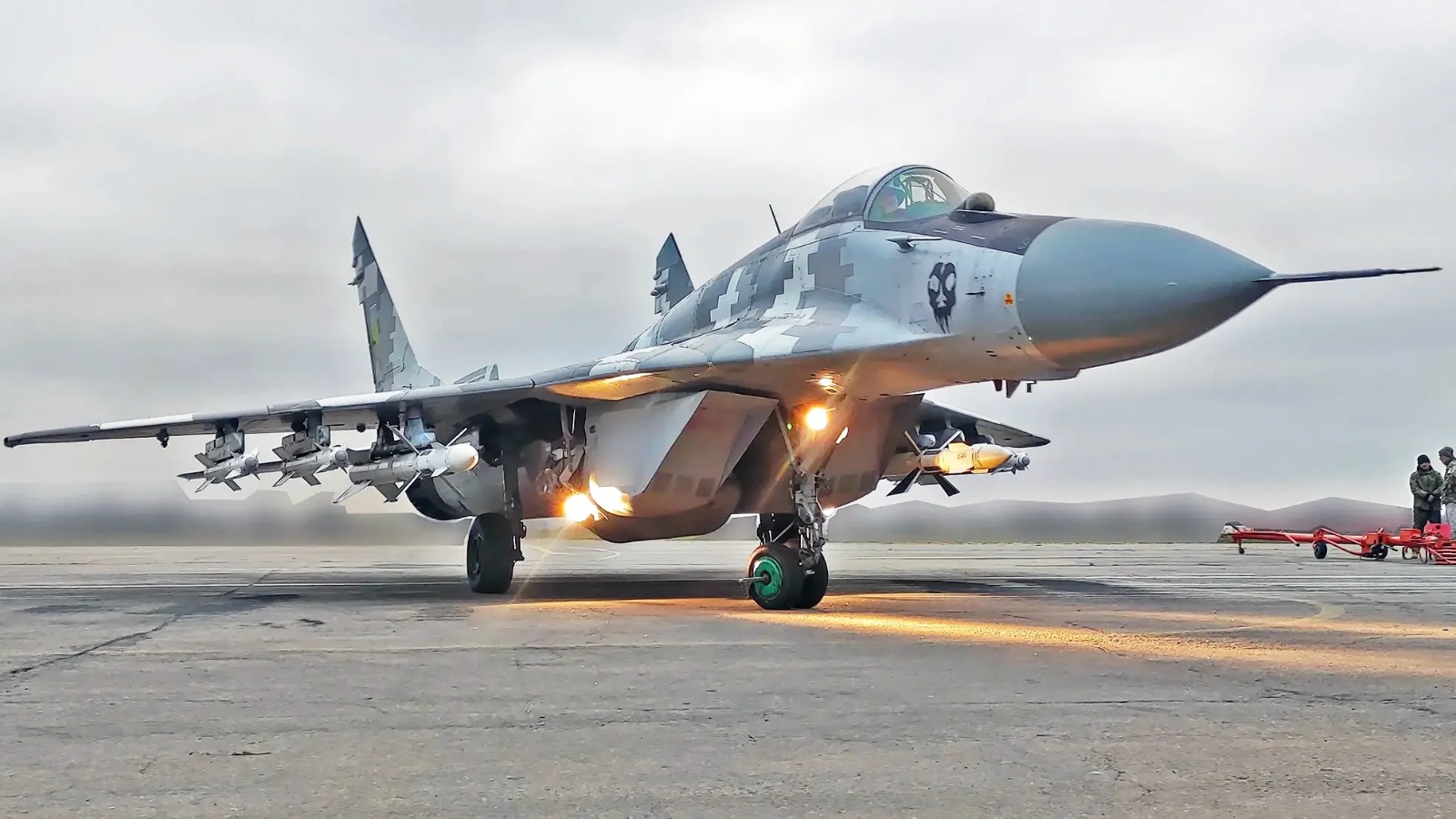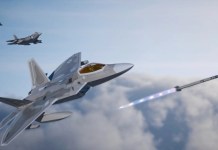In what reflects a lack of confidence in the Chinese WS-13IPE engines, Pakistan Air Force (PAF) has reportedly opted for the trusted Russian Klimnov RD-93MA engines for its JF-17 jets.
The Russian engines RD-93 have been powering the fighter jet jointly developed by China and Pakistan since the early 2000s. Pakistan now seeks an upgraded version, specifically developed for the JF-17 Block III fighter jets.
The RD-93MA engines are based on the RD-33 engines that power the MiG-29 fighter jets of PAF’s nemesis – the Indian Air Force (IAF).
The development of the RD-93MA overcomes previous constraints by updating the automatic engine management systems for improved performance and safety, redesigning important fan and hot section components, and increasing thermodynamic parameters.
The JF-17 Thunder combat aircraft is jointly developed by the Pakistan Aeronautical Complex and China’s Chengdu Aircraft Industry Corp. It has a Chinese airframe, Western avionics, and is powered by a Russian engine.
In the coming decades, the JF-17 is expected to be one of the mainstay combat aircraft of the Pakistan Air Force (PAF), which currently operates over 120 fighters in multiple variants. The PAF inducted the JF-17 Block III variant in 2023, and the fighter jet was fully operationalized in 2024.
Engines have been JF-17’s Achilles Heel. The aircraft was initially powered by a Russian RD-93, and even the Chinese Air Force found it lacking in thrust and did not induct it into its fleet.
Since its induction into PAF in 2007, it has seen a slew of crashes. The aircraft has been grounded several times due to issues like cracks in guide vanes, exhaust nozzles, and flame stabilizers.
The issue faced by JF-17 engines is also a lack of proper maintenance. After a certain number of flying hours, aircraft engines must be regularly replaced by the original equipment manufacturer (OEM).
However, such maintenance activities have become extremely cumbersome due to the strict economic sanctions imposed by the West against the original equipment supplier, ‘JSC Rosoboronexport,’ following the Russia-Ukraine conflict.
Since 2018, it has been the sole state-controlled firm in Russia for the export and import of all military equipment, technology, dual-purpose goods, and services.
The JF-17 Block III version was to address these shortcomings. The Block III has been fitted with state-of-the-art radars and electronic warfare subsystems while retaining the airframe design of the preceding Block I and Block II.
The most noticeable changes in the design include modifications at the rear of the aircraft, such as the vertical stabilizer, a slightly enlarged spine, and the integration of sensors into the vertical stabilizer and side inlet areas. The latter may be radar warning receivers (RWR) and/or missile alert warning systems (MAWS).
The JF-17 Block-III features a KLJ-7A active electronically scanned array (AESA) radar, which enhances accuracy in target detection and tracking while reducing its own radar signature and improving its stealth capabilities.
The JF-17 Block III features an integrated electronic warfare (EW) suite, self-protection systems, and a helmet-mounted display and sight (HMD/S) system. In addition to these upgrades, it is expected to feature a new, upgraded version of the RD-93 engines.
The Chinese then offered their local ‘unproven’ WS-13 engine to JF-17 operators, which was refused by Pakistan for their Block-3 JF-17 fighter jets.
Unlike the GE-404 engine, which powers many military aircraft globally with an unblemished record, the unproven WS-13 engine of China is riddled with reliability issues. The unreliable engine has made JF-17s hazardous for the pilot’s safety. The enhancements in the Block III variant extend to engine upgrades.
Russia, a long-time ally and key defense supplier of India, has tried to promote its engine deal with Pakistan as a win for India on several counts.
Russian defense experts have emphasized that while Pakistan is acquiring RD-93 engines, it is not receiving technology transfer. In 2024, India inked an agreement with Russia to manufacture RD-33 engines. The engines will power the IAF’s MiG-29 fleet, increasing their residual life.
One of the largest Indo-Russian engine cooperation projects is the manufacturing of the AL31FP, which powers the Russian twin-engine air superiority fighter, the Su-30MKI. In March 2017, HAL completed the manufacturing of 50 engines in phase V and UEC and entered into a long-term cooperation contract during the Russian-Indian military-industrial conference.
The Russian defense expert Pyotr Topychkanov, who leads the Section on New Challenges in South and Southeast Asia at the Moscow-based Primakov Institute, was quoted by Indian news agency Press Trust of India as saying: “I don’t think the criticism here is justified. If reports about Russia providing engines for the JF-17 are correct, it actually benefits India in two ways.”
He added, “Firstly, it shows that China and Pakistan haven’t yet managed to replace the Russian-origin engine. Secondly, the new aircraft will be familiar and predictable to India, especially since they share the same engine and India observed the JF-17’s operational use during the May 2025 crisis (a four-day war between India and Pakistan).” India has claimed to have shot down 5 PAF fighter jets, including JF-17.
Attempts by China to acquire the RD-93 engines were previously vetoed by the Indian government. The Indian establishment was concerned that the engine technology could have been transferred to Pakistan.
The RD-93, produced by the Klimov plant, has more thrust than its base, the RD-33, but a shorter service life. RD-93 has a service life of 2,200 hours, while RD-33 has a service life of 4,000 hours.
There has been no official confirmation from Russia about the deal.
In comparison, the WS-13, developed by Guizhou Liyang Aero Engine Co., Ltd., boasts a thrust of 86 kilonewtons, a marginal improvement over the RD-93’s 81.3 kN. It falls short of the RD-93MA’s 91.7 kN thrust.

Russian Roulette In South Asia
The incumbent Indian government has dismissed the reports about the deal between Russia and Pakistan as information warfare.
The report comes at a time when Indian defence ministry officials are scheduled to meet their Russian counterparts this week to consider either joint manufacture or outright purchase of five more S-400 air defence systems from Moscow.
The deal is expected to receive a green light before Russian President Vladimir Putin arrives in India on December 5 for the annual summit with Prime Minister Narendra Modi.
India is also considering the acquisition of a long-range air-to-air missile, with a range exceeding 200 km, from Russia. The missile will be integrated with the Su-30MKI to counter the Chinese PL-15 (range of 200km) operated by Pakistan. The IAF has also admitted to considering the acquisition of the Su-57, a Russian 5th-generation fighter.
- By ET Desk
- Mail us at editor (at) eurasiantimes.com




